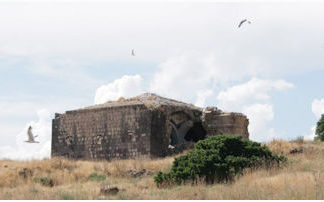By Tigran Kalaydjian
NICOSIA, Cyprus — The fact that SS Armenian once sailed the high seas and worked the cargo routes of the North Atlantic is news to most people, including Armenians.
Built as a freighter, the SS Armenian was a valuable transportation vessel in the profitable cargo service that existed between Great Britain and North America at the turn of the 20th century. The exact location of its final resting place remained a mystery until 2008, when its wreck was discovered off the western coast of England and it was seen for the first time since World War I.
For a ship born during the Hamidian massacres, it was perhaps inevitable that it would meet its doom in that darkest of years — 1915 — at the same time as the people with whom she shared her name were being slaughtered.
The SS Armenian was built in 1895 by Harland & Wolff, the Belfast shipyard that would later become famous for making the legendary trio Titanic, Olympic and Britannic. The vessel was 156 meters long and had a displacement of 8,825 tons.
The ship was launched on November 25, 1895 as the SS Indian for Frederick Leyland & Co, but wasn’t delivered until September of the following year, by which time it had been renamed the SS Armenian.








